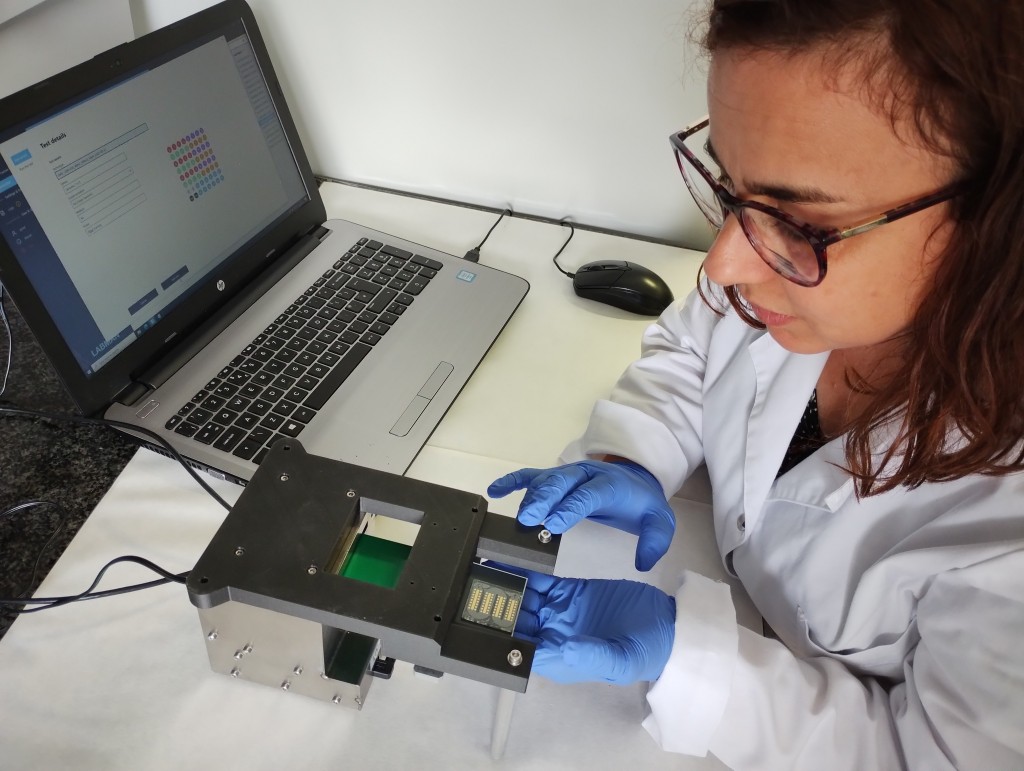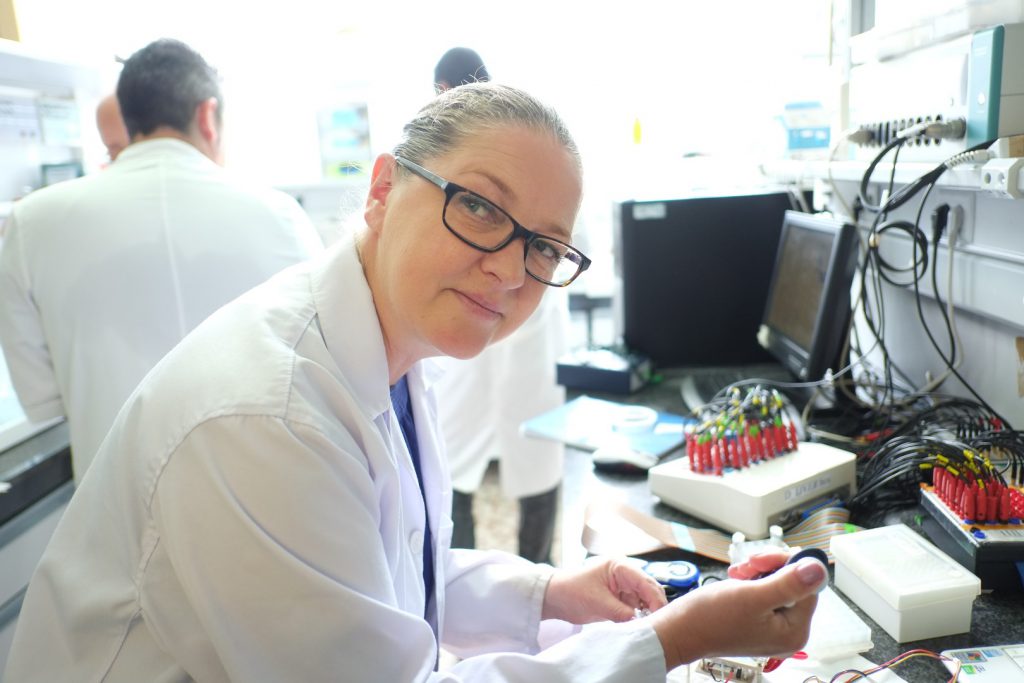26/07/2023
A biosensor has been developed to detect the risk of osteoporosis with a drop of blood
The device, created by an international team led by the URV, will make it possible to treat the disease before it progresses thanks to a fast, practical and cheap method

The device, created by an international team led by the URV, will make it possible to treat the disease before it progresses thanks to a fast, practical and cheap method
An international team led by the Department of Chemical Engineering at the Universitat Rovira i Virgili has developed a biosensor for the early detection of the risk of suffering osteoporosis, the disease that decreases bone density and, therefore, the resistance to fractures. A portable prototype has already been developed to work with this biosensor or electrochemical device. It will make the method fast, practical and cheap, and when it is ready it will allow the user to obtain the result from just a drop of blood and in a short time. The research findings have been published in the journal ACS Central Science.
The systems currently used only allow osteoporosis to be diagnosed when it is quite advanced, as the project coordinator, URV researcher Ciara O’Sullivan, explains: “They are not very sensitive and, as they use dual X-ray absorptiometry, they are very expensive. There is also a waiting list and it is not available in all medical centres. The system developed in this research uses electrochemical detection, which is the technique used in devices that measure the amount of sugar in the blood, because it is compatible with portable equipment, cheap and easy to operate. “Using a single drop of blood that a user obtains by pricking their finger, in less than 15 minutes and at a cost of only 0.30 euros per biomarker detected, we will be able to identify if this person is predisposed to osteoporosis,” adds O’Sullivan.
The device detects single nucleotide polymorphisms (SNPs) – the most common types of genetic variations in humans – that were identified as biomarkers of predisposition to osteoporosis after a large genomic study of more than 50,000 people.

Ciara O’Sullivan explains that detecting osteoporosis or a predisposition to osteoporosis as early as possible is fundamental, as the sooner you change your lifestyle by following the usual medical recommendations for osteoporosis (no smoking or drinking alcohol, more exercise, a less sedentary lifestyle and more vitamin D), the more effectively you can stop, inhibit or slow its progression.
Now that the biosensor has been validated with real blood samples from patients and the portable prototype is operating, all that remains to be done is to integrate it into a microsystem containing all the reagents so that the user can add the drop of blood and detect the predisposition to osteoporosis, a process they hope to complete soon.
This practical, accessible device, which will be available at all points of care, has another advantage, says Ciara O’Sullivan: it is generic and versatile. This means that it can be used to detect predisposition to many other types of diseases and antibiotic resistance to various pathogens. Likewise, it can be used by forensic science, especially with highly degraded DNA samples. In this same line of research, in January 2024 the same group of researchers will start a new project, using the same technology, to detect predisposition to developing cardiovascular diseases.
